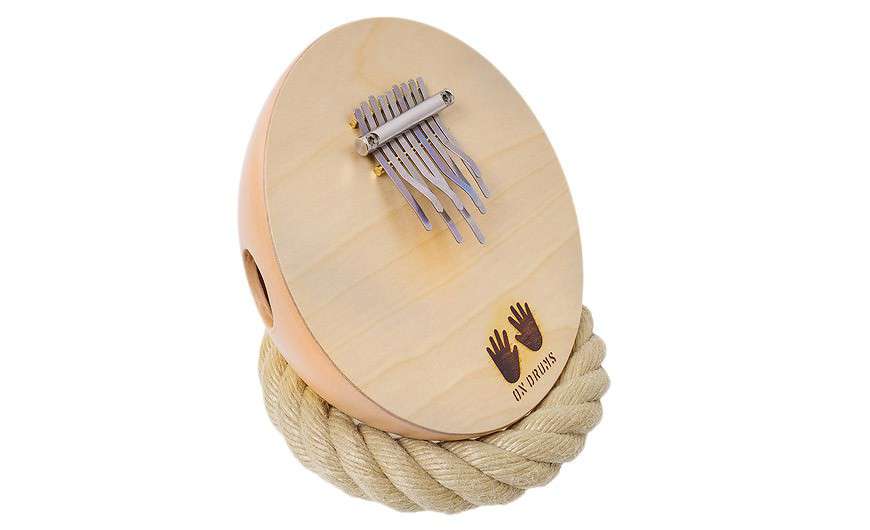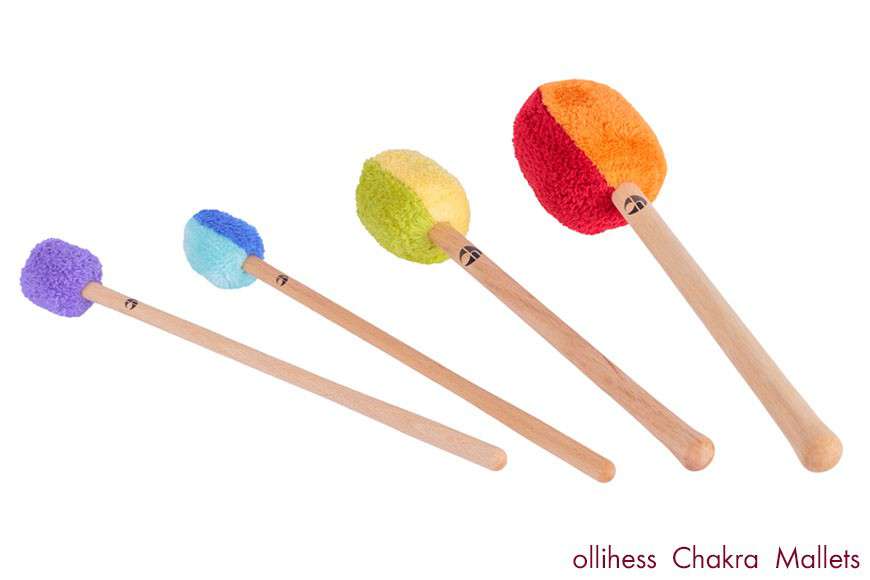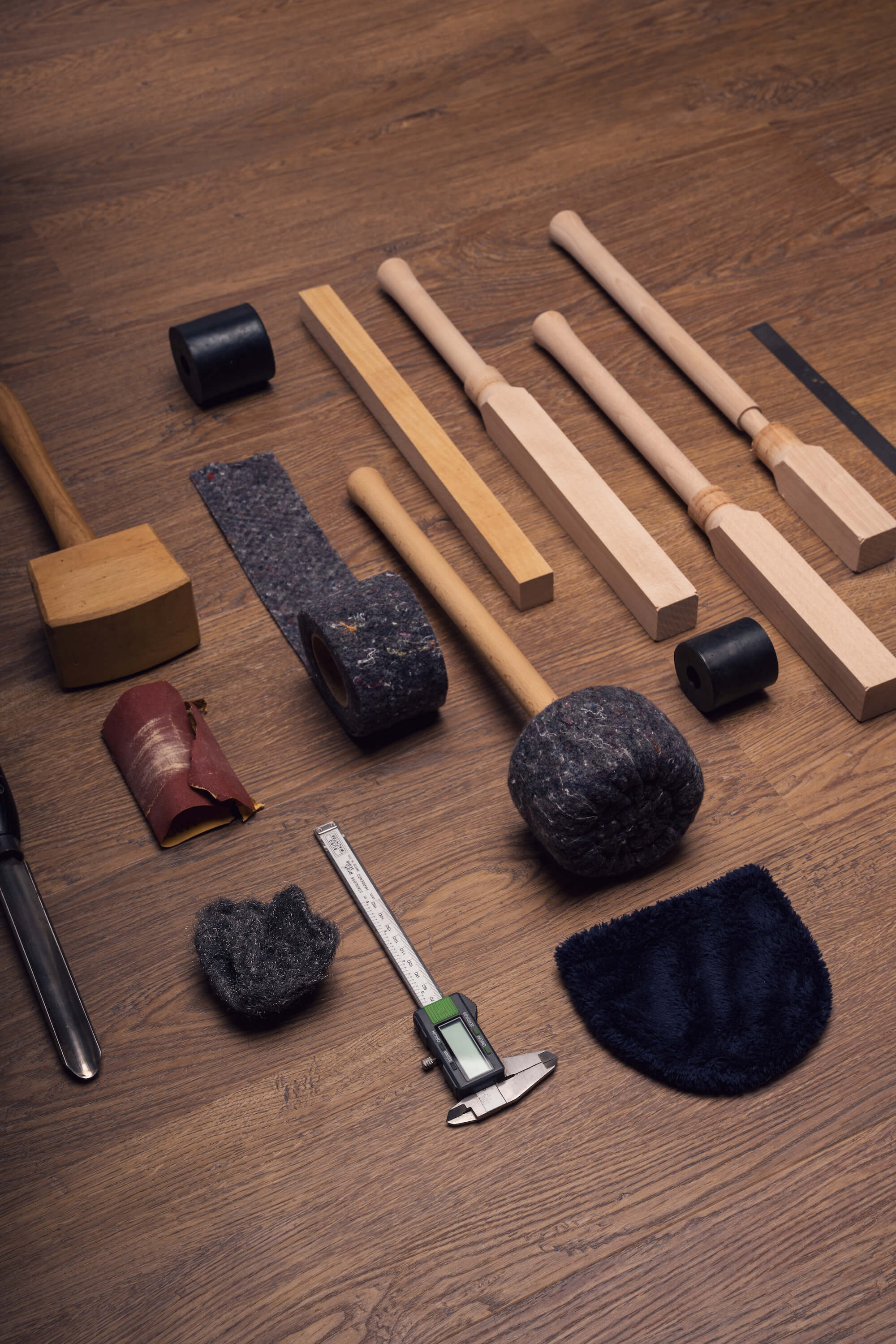The kalimbula is a kalimba that is very much based on the idea of the African "mbira" and combines this with the wishes and sound habits of the western-northern music world. Hands on Drums currently offers an African tuning in A major sextatonic (B-C#5-C#4-A4-A3-F#4-E4-E5-G#4) of the kalimbula - with the sound tongues of the company "HOKEMA". The tuning comes from Micha Schwarz - Hands on Drums Endorser.
The African mbira (Zimbabwe) usually consists of a sound wood on which metal bars of different sizes are mounted as sound tongues.
To amplify the sound, some mbira use a gourd / calabash ("deze") . The tonewood with the metal rods is then clamped into this kind of hemisphere using a clamping stick. Traditionally, metal disks are usually attached to the outer edge, which rattle loudly when strike the metal tongues. This was the idea for the model used to build the kalimbula. The kalimbula takes up this construction method with the ceramic hemisphere, the clamping stick is a very thin wooden board and the sound wood is attached on the inside, underneath the "sound wood ceiling". The tuning of the kalimbula is based on the Nyunga Nyunga mbira, which has a wooden frame as a resonating body. This mbira has 15 reeds, three of which are tuned in the same way as three other reeds of this instrument, so there are 12 different tones. The kalimbula lacks only three tones of the mbira nyunga nyunga. All traditional pieces for the mbira nyunga nyunga can be played on the kalimbula, with the restriction that the kalimbula lacks the three high notes of the mbira nyunga nyunga.
The sound tongues are located at the top. There are two holes in the ceramic on the left and right, which can be used to model the air vibrations created by the strike tongues. The larger bottom hole at the bottom not only provides better stability, but also allows additional modulation of the longer vibrations of the low notes. Two types of sound pick-up are optionally available: a dynamic and a static (piezo) microphone.
The dynamic microphone is primarily used to pick up all air vibrations and modulate them through the holes. The static microphone (piezo) is mainly used to pick up the vibrations of the body and, in a direct way, those of the metal reeds. Both together create a sound pickup that can come very close to the sound perception without amplification. Hands on Drums recommends using jack plugs angled at 90° so that the center of gravity of the Kalimbula does not shift negatively and thus impair the playing of the instrument.
With the optional stand ring made of twisted polyhemp rope, the sounds of the kalimbula are enhanced even further: if you place the kalimbula in this ring, it is not only protected as well as possible from falling over and being knocked over, but you also get an even warmer sound from the reeds; the modeling of the tones at the side holes becomes clear and balanced. Thanks to the design of the ring, the vibrations of the air are not "trapped" and can develop freely.
Optional accessories:
- static microphone (piezo)
- dynamic microphone
- polyhemp rope stand
- 6.3mm jack plug with 6.3mm angled jack plug, cable length: 100-500cm
- soon available: hard case for Kalimbula with attached cable bag





Leave a comment
This website is protected by hCaptcha and the terms and conditions and privacy policy of hCaptcha apply.